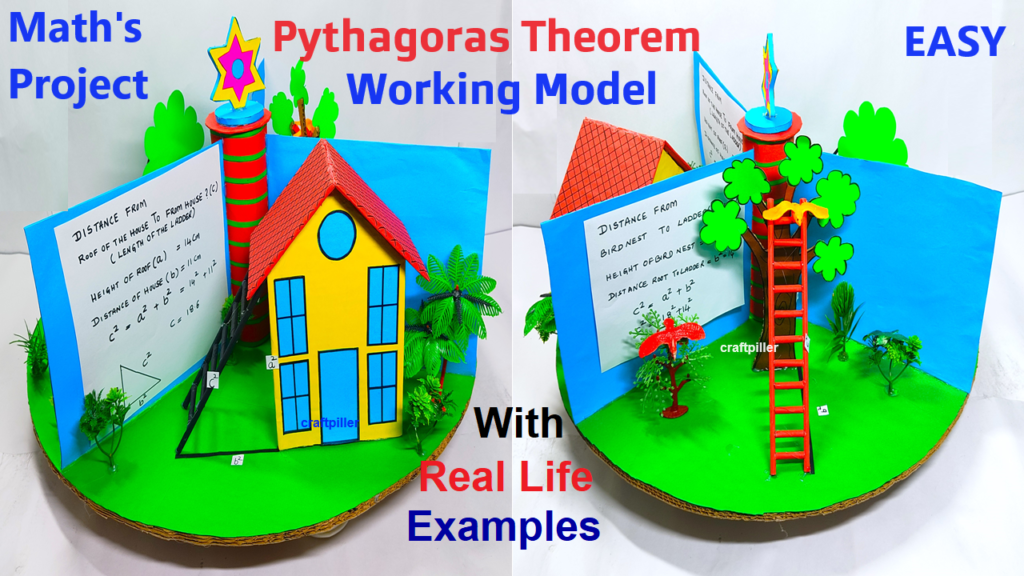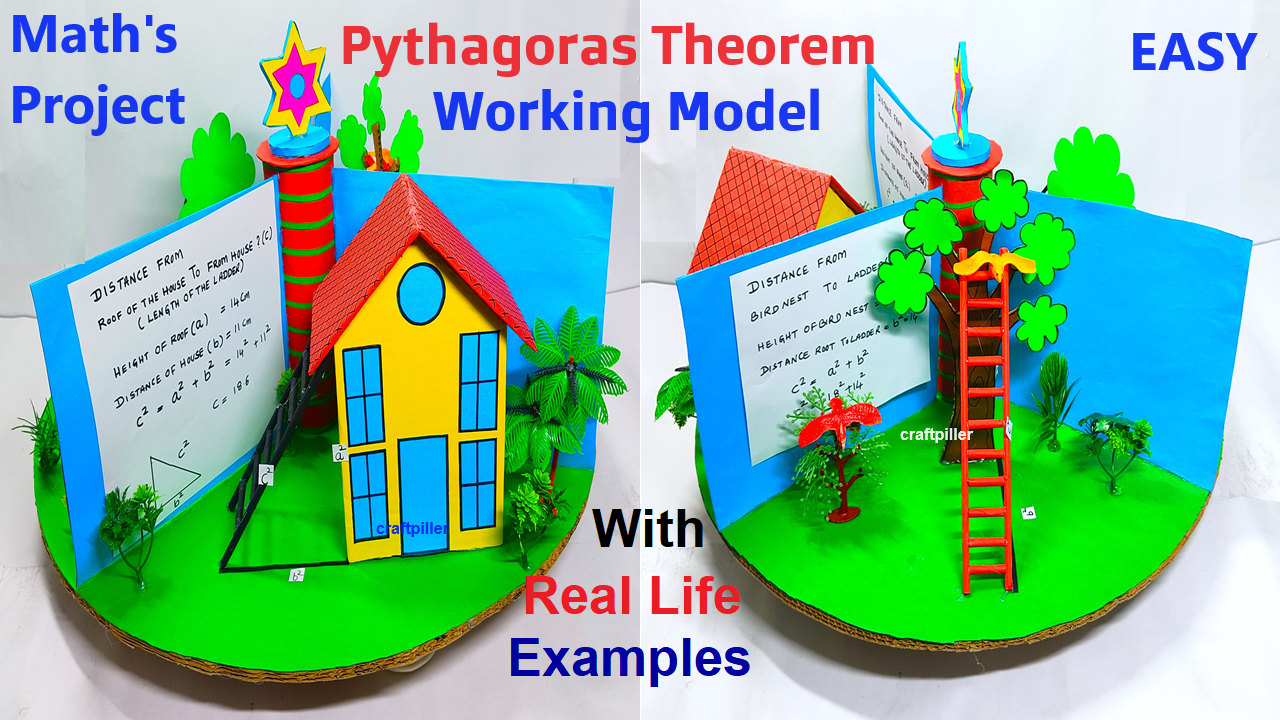Creating working models for math concepts can help students understand and visualize abstract ideas. Here are 25 math working models suitable for 10th-grade students:

Algebra and Arithmetic
- Algebraic Expression Simplifier
- Materials: Cardboard, colored paper, sliders
- Description: A model with sliders that combine like terms and simplify expressions.
- Quadratic Equation Solver
- Materials: Cardboard, graph paper, strings
- Description: A model that visualizes the solutions of a quadratic equation using a parabola graph.
- Polynomial Function Graph
- Materials: Cardboard, colored paper, strings
- Description: A visual representation of polynomial functions and their roots.
- Arithmetic Sequence and Series
- Materials: Cardboard, colored paper, beads
- Description: A model demonstrating the terms of arithmetic sequences and their sums.
- Geometric Sequence and Series
- Materials: Cardboard, colored paper, beads
- Description: A visual representation of geometric sequences and their sums.
Geometry
- Pythagorean Theorem Proof
- Materials: Cardboard, colored paper, right-angled triangles
- Description: A model showing different proofs of the Pythagorean theorem.
- Circle Theorems
- Materials: Cardboard, compass, string
- Description: A model illustrating various circle theorems, including angles and tangents.
- 3D Geometric Shapes
- Materials: Cardboard, colored paper, glue
- Description: Models of various 3D shapes like cubes, cones, and cylinders with labeled properties.
- Surface Area and Volume of Solids
- Materials: Cardboard, colored paper, small containers
- Description: Models demonstrating the calculation of surface area and volume for different solids.
- Similar Triangles
- Materials: Cardboard, colored paper, strings
- Description: A model showing properties of similar triangles and their proportional sides.
Trigonometry
- Unit Circle
- Materials: Cardboard, colored paper, compass
- Description: A model illustrating the unit circle, radians, and trigonometric functions.
- Sine and Cosine Wave Generator
- Materials: Cardboard, strings, pins
- Description: A model showing how sine and cosine waves are generated.
- Trigonometric Ratios
- Materials: Cardboard, colored paper, right-angled triangles
- Description: A visual representation of sine, cosine, and tangent ratios.
- Trigonometric Identities
- Materials: Cardboard, colored paper, sliders
- Description: A model illustrating fundamental trigonometric identities.
- Angle of Elevation and Depression
- Materials: Cardboard, protractor, strings
- Description: A model demonstrating real-life applications of angle of elevation and depression.
Calculus (Basics)
- Derivative Visualization
- Materials: Cardboard, graph paper, sliders
- Description: A model illustrating the concept of a derivative as the slope of a tangent.
- Integral Representation
- Materials: Cardboard, graph paper, colored paper
- Description: A model showing the area under a curve to represent definite integrals.
- Limits and Continuity
- Materials: Cardboard, graph paper, sliders
- Description: A model demonstrating the concept of limits and continuity of functions.
Statistics and Probability
- Probability Tree
- Materials: Cardboard, colored paper, markers
- Description: A visual representation of different outcomes and their probabilities.
- Mean, Median, Mode
- Materials: Cardboard, beads, sliders
- Description: A model to calculate and display the mean, median, and mode of a dataset.
- Histogram and Bar Graphs
- Materials: Cardboard, colored paper, markers
- Description: Models showing how data is represented in histograms and bar graphs.
- Standard Deviation
- Materials: Cardboard, colored paper, beads
- Description: A model demonstrating the calculation of standard deviation in a dataset.
Miscellaneous
- Fibonacci Sequence
- Materials: Cardboard, colored paper, beads
- Description: A model illustrating the Fibonacci sequence and its golden ratio.
- Mathematical Set Operations
- Materials: Cardboard, colored paper, Venn diagrams
- Description: A model showing various set operations like union, intersection, and difference.
- Transformation of Shapes
- Materials: Cardboard, colored paper, sliders
- Description: A model demonstrating geometric transformations like translation, rotation, and reflection.
These models provide a hands-on learning experience, helping students better understand and engage with various mathematical concepts.

